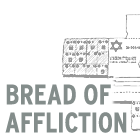
Omelet with apples
A remarkable document has survived from the Theresienstadt (Terezín) ghetto, which for most Jews was a transit camp on the way to Auschwitz: Minna Pächter, who was already seventy when she was imprisoned in the camp in 1942, wrote down recipes with the help of several other women.
Faced with constant hunger, the women recalled the dishes they used to cook when they were still able to look after their families and celebrate religious festivals. Susan Cernyak-Spatz, who survived Theresienstadt and Auschwitz, described it thus: "We called it ‘cooking with the mouth.’ Everybody did it. And people got very upset if they thought you made a dish the wrong way or had the wrong recipe for it." Imagination and hope were vital for survival. The prisoners’ memories of food traditions and their own culture, which was being destroyed in front of their eyes, strengthened their sense of identity.
Before Minna Pächter died in Theresienstadt, she entrusted a friend with the manuscript and asked him to forward it to her daughter in Palestine, even though she did not have her address. After 25 years, a small parcel reached 62-year-old Anny Stern in Manhattan.





